Here is my first run on these plugins where I chose an area with some nebulosity. The image I chose hadn't been drizzled in WBPP so I opted to upsample it before running correct only, BXT Decon and for the sake of this test I ran DBE as well. This in order to simulate part of my real workflow as it wouldn't make much sense to me to leave out any steps. Afterwards I resampled the image.
I am also running all the latest versions on all the software in use.The original: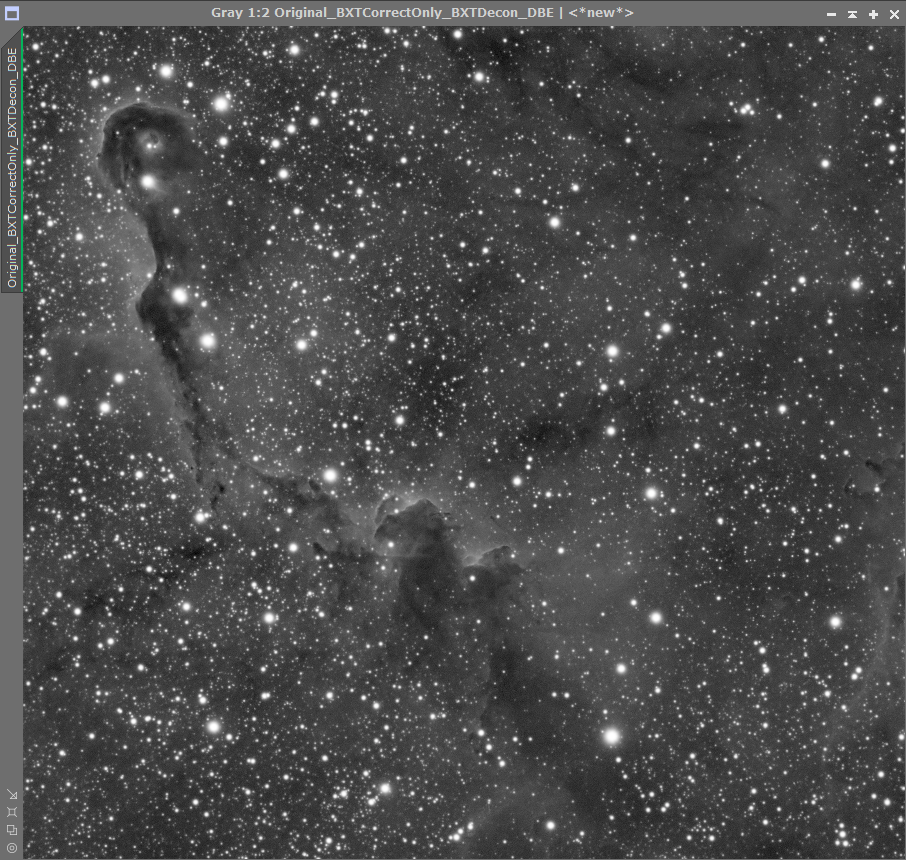
Here are the results with the various tools and settings, settings will be noted in the image identifier. I couldn't fit them all in the same preview image here, so I've paired each of them with the Starnet result as well as the original. The only thing changed after running each of the processes is the STF which was recalculated. Sorry if it gets long this way, but I figured this would probably be optimal:
SXT Full vs Starnet:


SXT Lite vs Starnet
 SXT Lite Nonoise vs Starnet:
SXT Lite Nonoise vs Starnet:

As I see it the key feature is how SXT is handling star replacement. Starnet is clearly leaving a lot of spots behind which may be fine in the end result (I didn't go that far). Whereas SXT in its "full mode" is perhaps affecting small scale signal and the lesser options to a less degree of course since they are deisgned to run faster and with less functionality.
I picked a couple of particular areas with some faint structures and performed an equal pixelmath stretch between all images (No other processing was done):




Given that this is only a simple pixelmath stretch I think they aren't too dissimilar. Looking very close you notice differences between all of these results and I would perhaps lean towards Starnet having a slight advantage while pixel peeping, especially in terms of small scale background details like those dark areas around the trunk. However in certain areas Starnet has failed to properly remove stars like here:
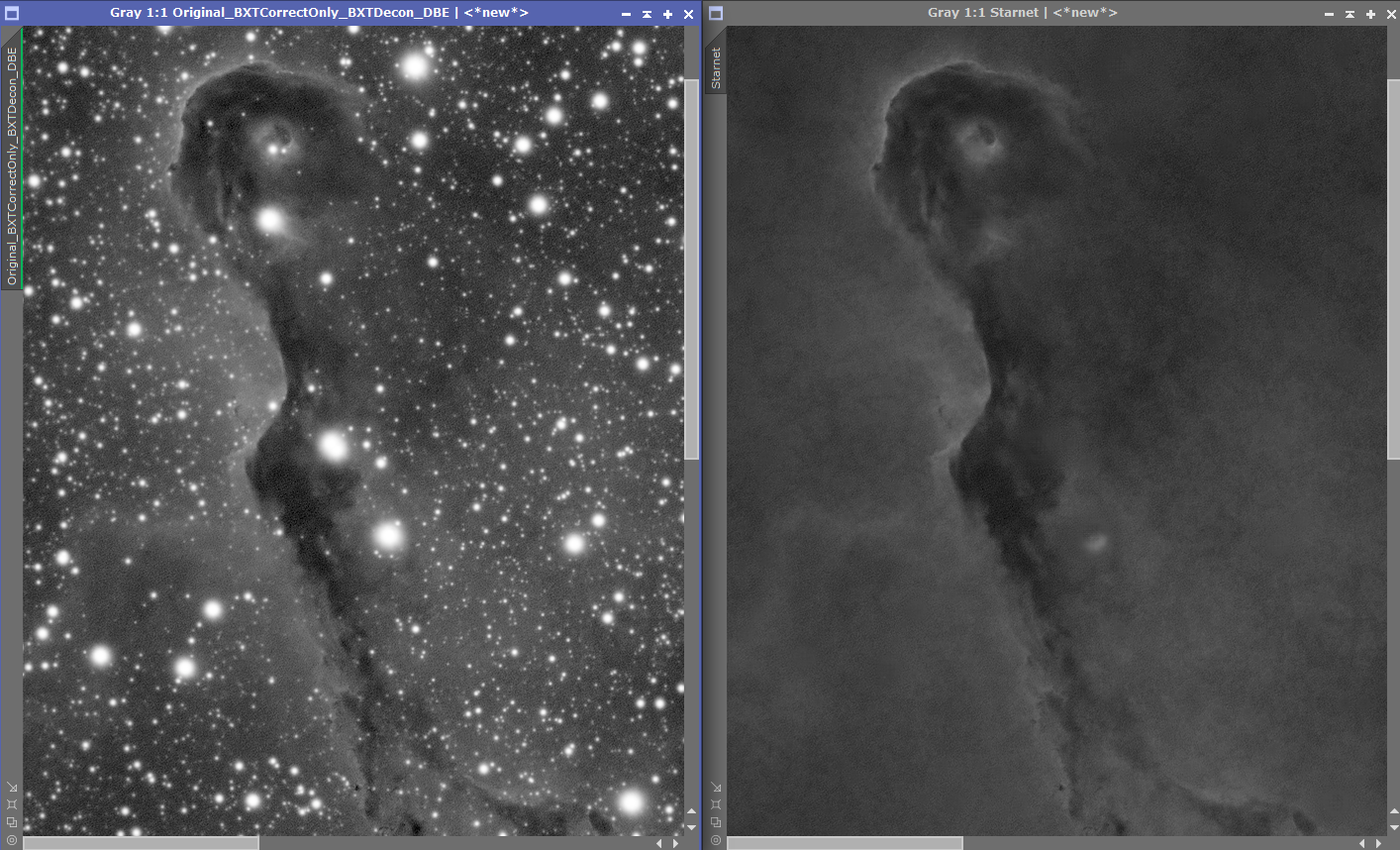 Here are some previews of the stretched images with the stars screened back in:
Here are some previews of the stretched images with the stars screened back in:



At this point I'm less sure about Starnet. It looks a bit off in terms of how well the stars have gotten re-integrated as opposed to the SXT images. Those very small details gained in 2:1 view above have become even more miniscule:
 Same images with a parse of NXT (0.25 NR and 0.15 detail):
Same images with a parse of NXT (0.25 NR and 0.15 detail):
I don't see any loss of larger scale signal like someone showcased in a previous post. While I haven't fully processed either of these images I'm tempted to say that in the end result I think you'll be hard pressed to notice much difference in details between any of these starless images. I think using SXT Lite (not the no noise AI) will probably be very close if not better than Starnet, while the full AI will probably smoothen things out quite a bit more.
Here's a similar test conducted on a galaxy image, I tried cropping while including a number of smaller galaxies as well, the image was drizzled x2 in WBPP. Otherwise the same processes are run here as to the previous test image BXT with correct only first, then decon. At the end I did background extraction before proceeding with the star removal tools.
The original image: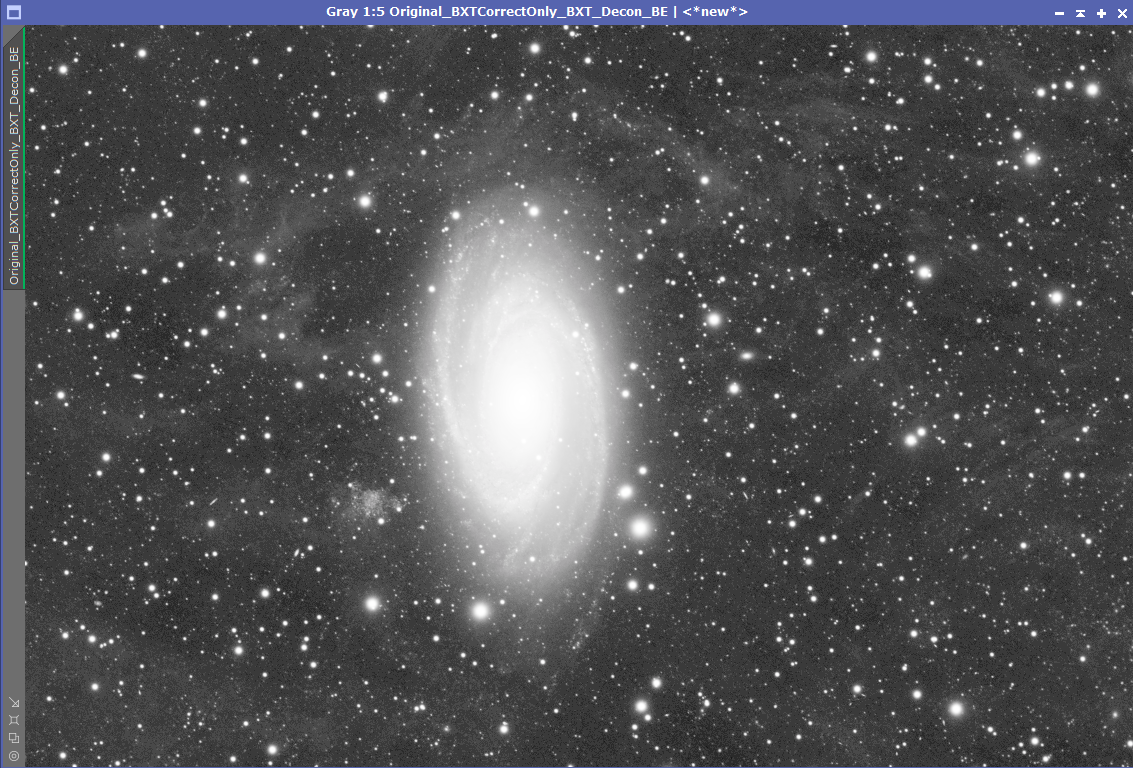
Here it becomes very interesting, very quickly. Already from the start I notice that Starnet is having big problems as can be seen below:
SXT Full vs Starnet2:
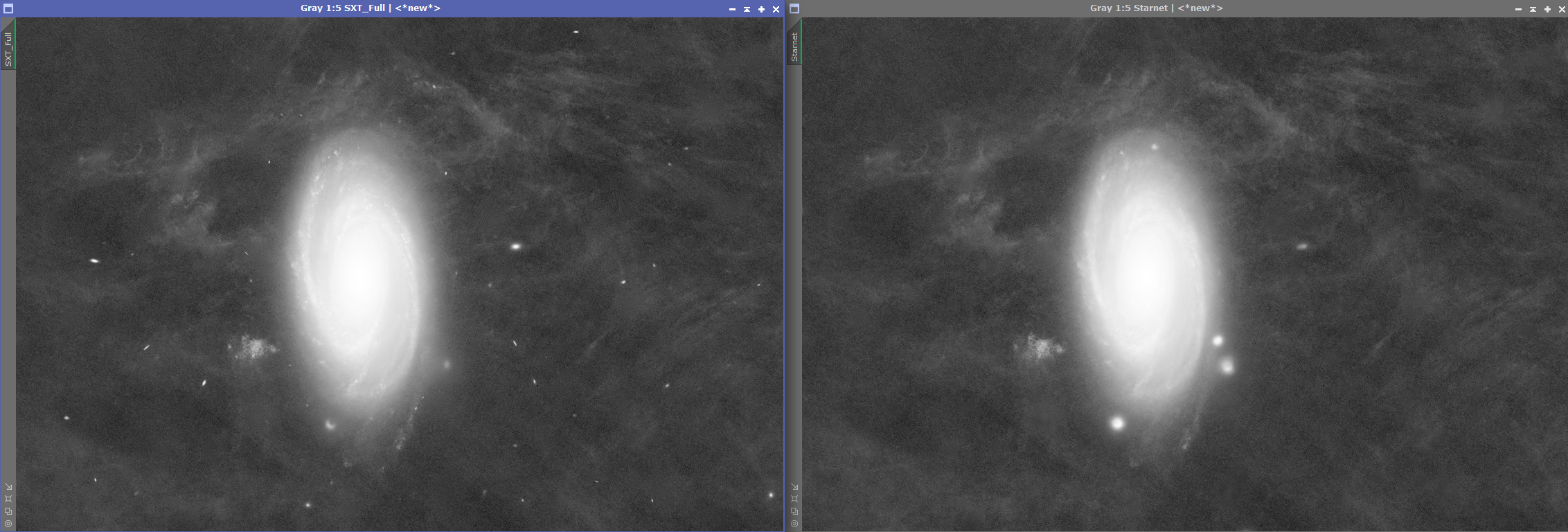 SXT Lite vs Starnet 2:
SXT Lite vs Starnet 2:
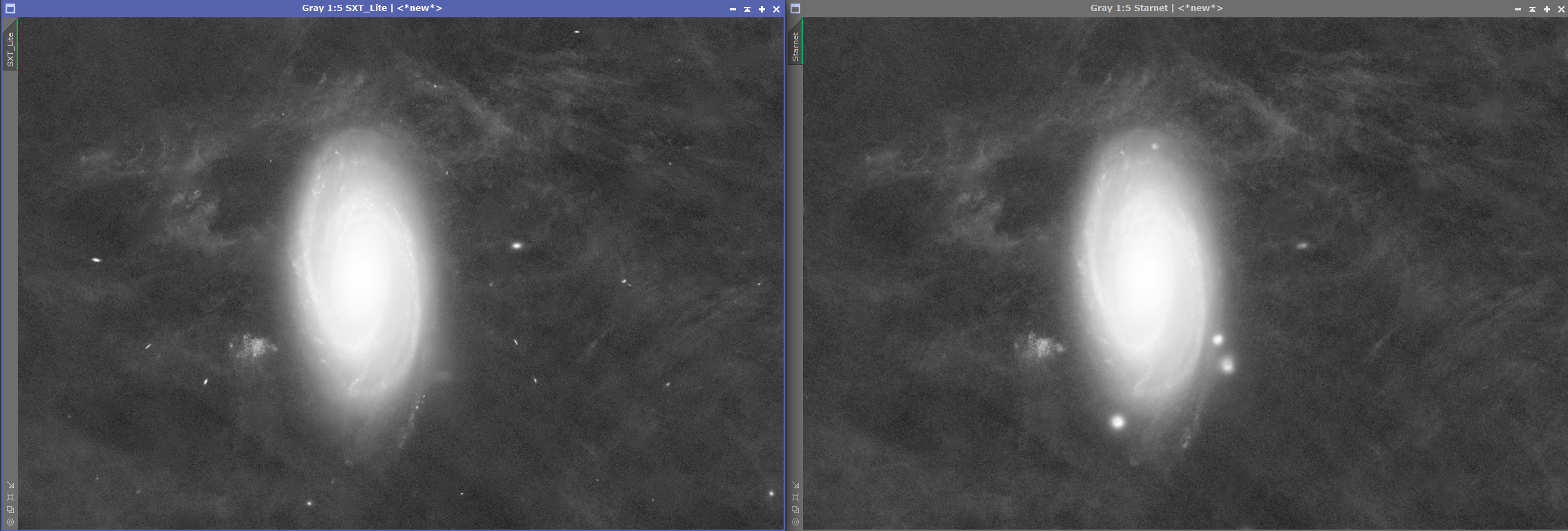 SXT Lite Nonoise vs Starnet2:
SXT Lite Nonoise vs Starnet2:

It's quite evident that Starnet2 has obliterated almost every single background galaxy in the entire image, while SXT in it's full AI mode has preserved the most. Starnet2 also have issues handling the larger stars in the image, some of which SXT also have slight issues with but not nearly as much. The two SXT Lite versions are handling those a lot better, but at the cost of background galaxies.
Unfortunately PI crashed on me
twice while I was bringing up the comparison images with a lesser applied STF to inspect the main galaxy.
This only happened when I tried handling my Starnet2 image, each time. So I had to redo all of the images, but I kept the processes intact although the crop might have become slightly different. This shouldn't be an issue overall though as the most interesting thing in these images is the main galaxy itself. However I found that with the tighter crop SXT in its full mode now handled those big stars a lot better, go figure. I might also add that Starnet2 seem to also remove a lot of small details in the main galaxy itself. I noticed this immediately upon inspecting the first star mask it produced. All the nebulosity and highlighted details in general are gone, this did not change with the tighter crop.
Original vs SXT Full vs Starnet: Original vs SXT Lite vs Starnet:
Original vs SXT Lite vs Starnet: Original vs SXT Lite Nonoise vs Starnet:
Original vs SXT Lite Nonoise vs Starnet: Disclaimer: Both of these images have a fair amount of data, the galaxy image definetly has a lot, the Trunk also have a reasonable amount. I have not tested how they handle lower SNR images. That wouldn't be very useful either.
Disclaimer: Both of these images have a fair amount of data, the galaxy image definetly has a lot, the Trunk also have a reasonable amount. I have not tested how they handle lower SNR images. That wouldn't be very useful either.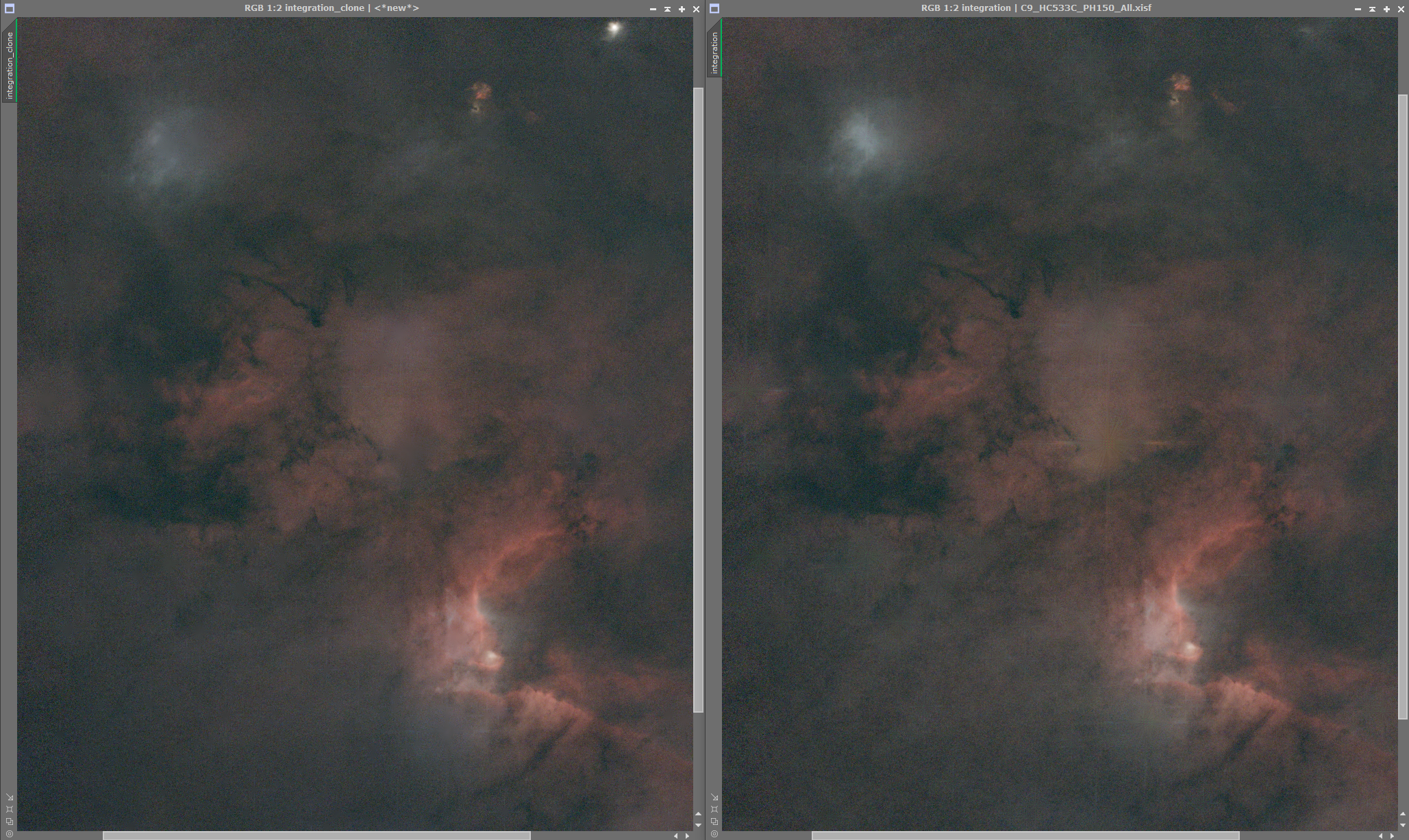


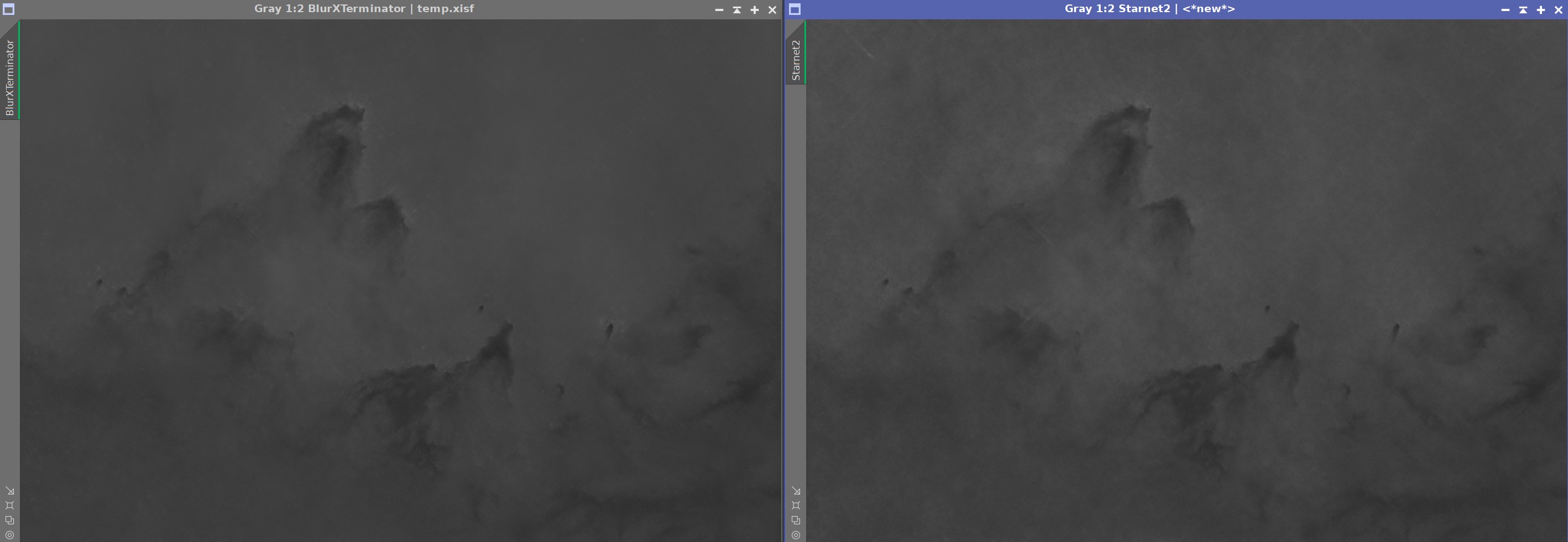










 Given that this is only a simple pixelmath stretch I think they aren't too dissimilar. Looking very close you notice differences between all of these results and I would perhaps lean towards Starnet having a slight advantage while pixel peeping, especially in terms of small scale background details like those dark areas around the trunk. However in certain areas Starnet has failed to properly remove stars like here:
Given that this is only a simple pixelmath stretch I think they aren't too dissimilar. Looking very close you notice differences between all of these results and I would perhaps lean towards Starnet having a slight advantage while pixel peeping, especially in terms of small scale background details like those dark areas around the trunk. However in certain areas Starnet has failed to properly remove stars like here:












